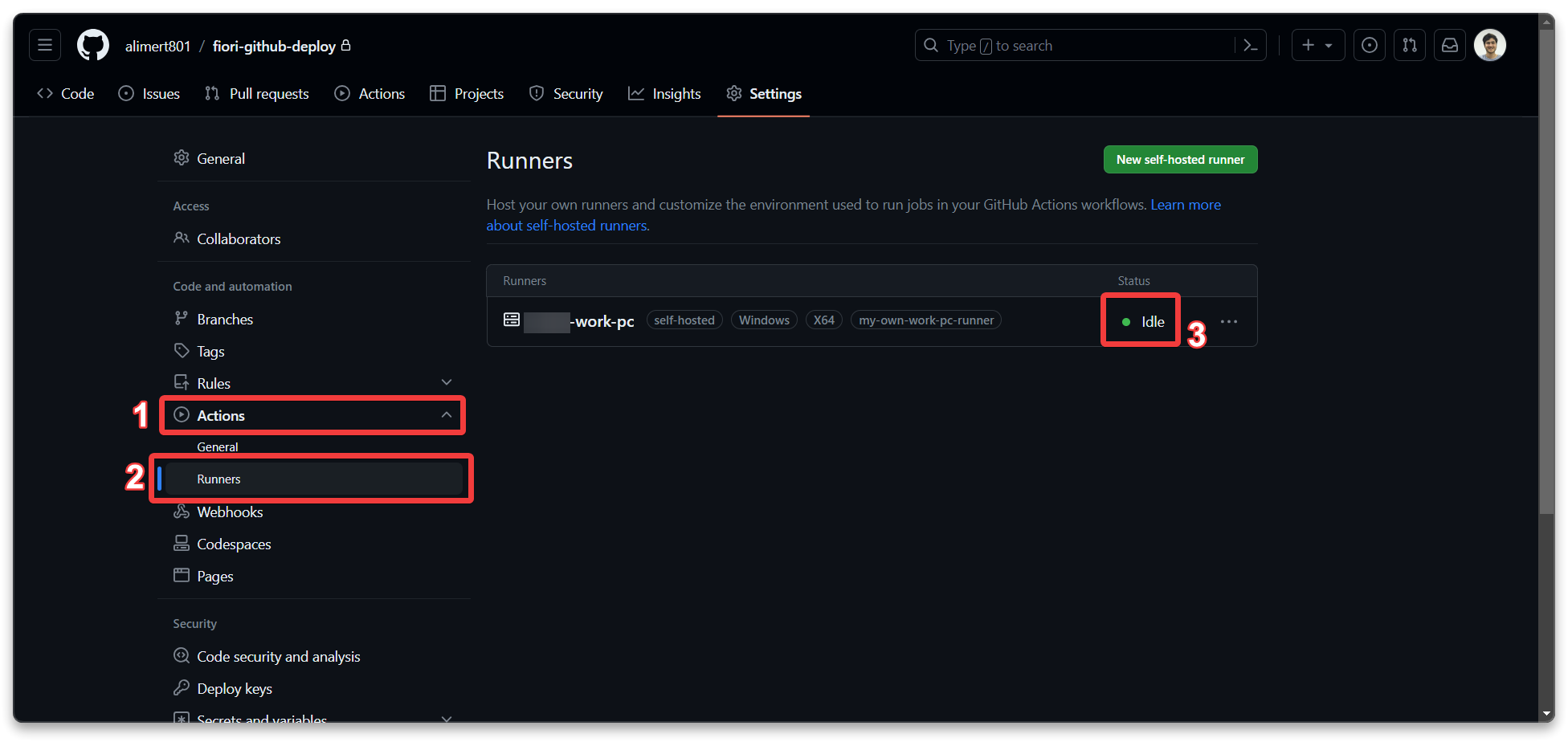
In the world of business apps, SAP Fiori makes things user-friendly, while GitHub Actions automates tasks. This guide explores how combining Fiori with GitHub Actions can make deploying apps smoother. Let’s dive in to see how this blend can simplify and enhance the deployment process for SAP Fiori Apps.
Summary:
This guide teaches you how to combine SAP Fiori and GitHub Actions for easier app deployment. Step-by-step, learn Fiori’s user-friendly approach and set up GitHub workflows for smoother deployments. Experience better processes and user interactions, all within secure systems, to understand efficient deployment methods.
Pre-requisites:
- S/4 HANA System
- VSCode with SAP Fiori Tools – Extension Pack
- GitHub
Steps:
- Step 1 – Understand SAP Fiori Apps and deploy process
- Step 2 – Github Repository and Github Runner Setup
- Step 2.1 – Create Github Repository and push fiori app
- Step 2.2 – Github Runner for Systems which access through VPN
- Step 3 – Workflow Configuration
- Step 4 – Manually run and check
Step 1 – Understand SAP Fiori Apps and deploy process
SAP Fiori Apps represent a transformative approach to enterprise applications, focusing on user-centric design and simplified workflows. These apps reimagine the way users interact with business processes, leading to enhanced productivity and user satisfaction.
The deployment process for SAP Fiori Apps involves several key steps. Once the app development and testing are complete, the app is packaged with relevant configurations. Utilizing tools like the VSCode Sap Fiori Tools, the app is then transported and installed on the desired system.
This streamlined approach ensures a smooth deployment, allowing organizations to leverage the full potential of SAP Fiori Apps to improve user experiences and optimize business operations within their secure infrastructure.
Step 2.1 – Create Github Repository and push fiori app
Create repository and push your fiori application to your repository

Fiori Application Github Repository
Step 2.2 – Github Runner for Systems which access through VPN
Runner allows to deploy application to a system which only can access through VPN.
First, go settings of repository that we have just created.

Select operating system by requirements and follow instructions to run.

Lastly, run and check


Step 3 – Workflow Configuration
Configure the GitHub Actions workflow to trigger deployment based on manual or specific events, such as code pushes to the repository or pull request to a specific branch. Define the sequence of steps required for deployment.
To create new workflow go to repository and Actions Tab

Create configuration file and commit changes.

Here is configuration and its explanation:
# This workflow will do a clean installation of node dependencies, cache/restore them, build the source code and run tests across different versions of node
# For more information see: https://docs.github.com/en/actions/automating-builds-and-tests/building-and-testing-nodejs
name: Fiori App Deploy
on:
#to trigger when pull request to main branch
pull_request:
branches: [ "main" ]
#to run manually on the Actions Tab
workflow_dispatch:
jobs:
build:
#to run on runner that we have just defined, this is the label of a self-hosted runner that is defined in its setting-up process.
runs-on: my-own-work-pc-runner
steps:
#to fetch repository local for runner
- name: Checkout
uses: actions/checkout@v3
#to install packages from the node_modules cache, npm ci installs packages from the package-lock. json file
- run: npm ci
#to deploy app your system
- run: ECHO 'Y' | npm run deployStep 4 – Manually run and check
Go to Actions Tab of repository and run workflow manually



Conclusion
Exploring SAP Fiori and GitHub Actions has unlocked the potential for streamlined deployment processes. Share your insights in the comments and stay tuned for more tech insights by following for similar content. Let’s continue shaping the future of business tech together through ongoing learning and innovation.
Referances
如有侵权请联系:admin#unsafe.sh